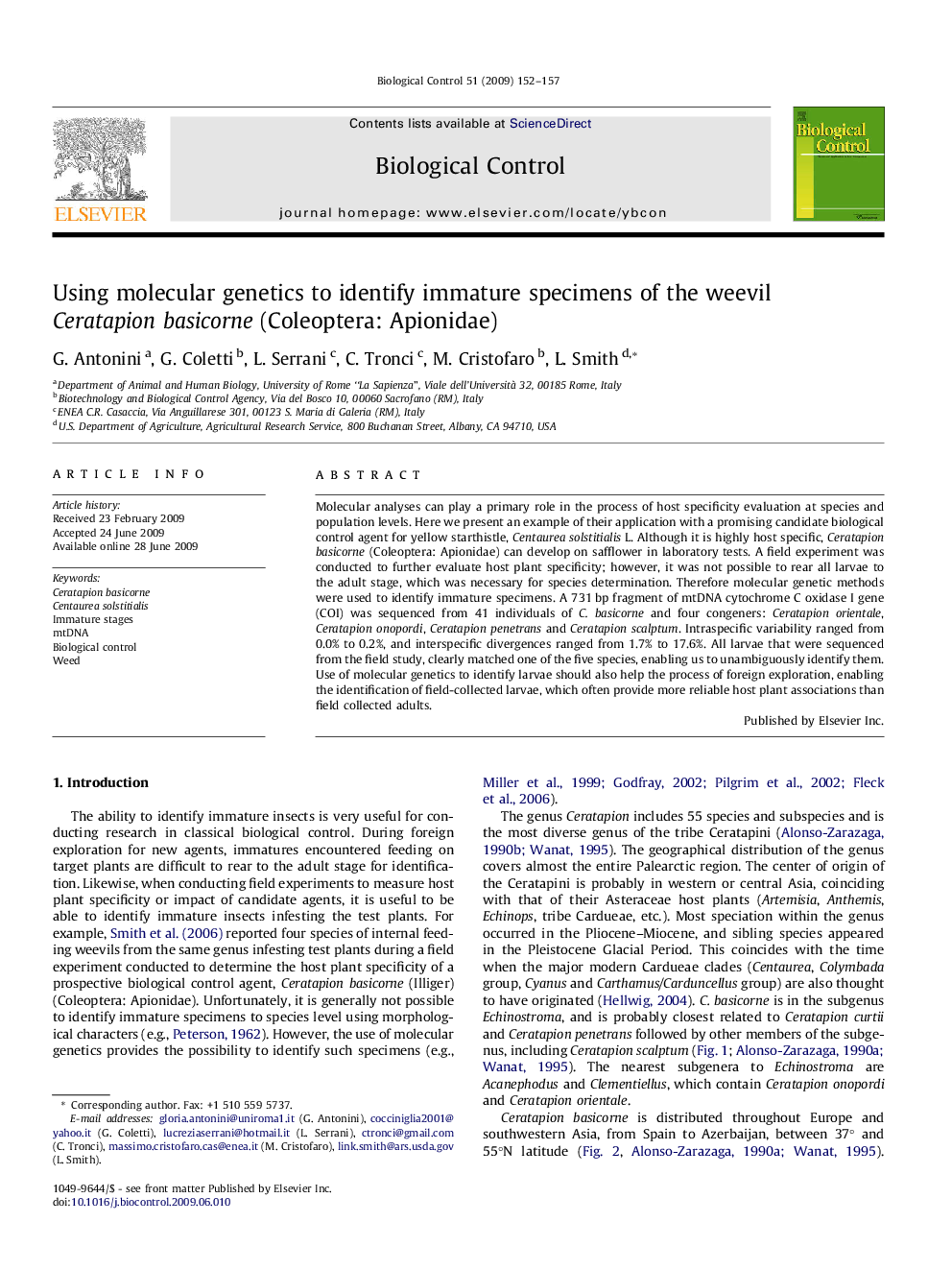| Article ID | Journal | Published Year | Pages | File Type |
|---|---|---|---|---|
| 4504525 | Biological Control | 2009 | 6 Pages |
Molecular analyses can play a primary role in the process of host specificity evaluation at species and population levels. Here we present an example of their application with a promising candidate biological control agent for yellow starthistle, Centaurea solstitialis L. Although it is highly host specific, Ceratapion basicorne (Coleoptera: Apionidae) can develop on safflower in laboratory tests. A field experiment was conducted to further evaluate host plant specificity; however, it was not possible to rear all larvae to the adult stage, which was necessary for species determination. Therefore molecular genetic methods were used to identify immature specimens. A 731 bp fragment of mtDNA cytochrome C oxidase I gene (COI) was sequenced from 41 individuals of C. basicorne and four congeners: Ceratapion orientale, Ceratapion onopordi, Ceratapion penetrans and Ceratapion scalptum. Intraspecific variability ranged from 0.0% to 0.2%, and interspecific divergences ranged from 1.7% to 17.6%. All larvae that were sequenced from the field study, clearly matched one of the five species, enabling us to unambiguously identify them. Use of molecular genetics to identify larvae should also help the process of foreign exploration, enabling the identification of field-collected larvae, which often provide more reliable host plant associations than field collected adults.
